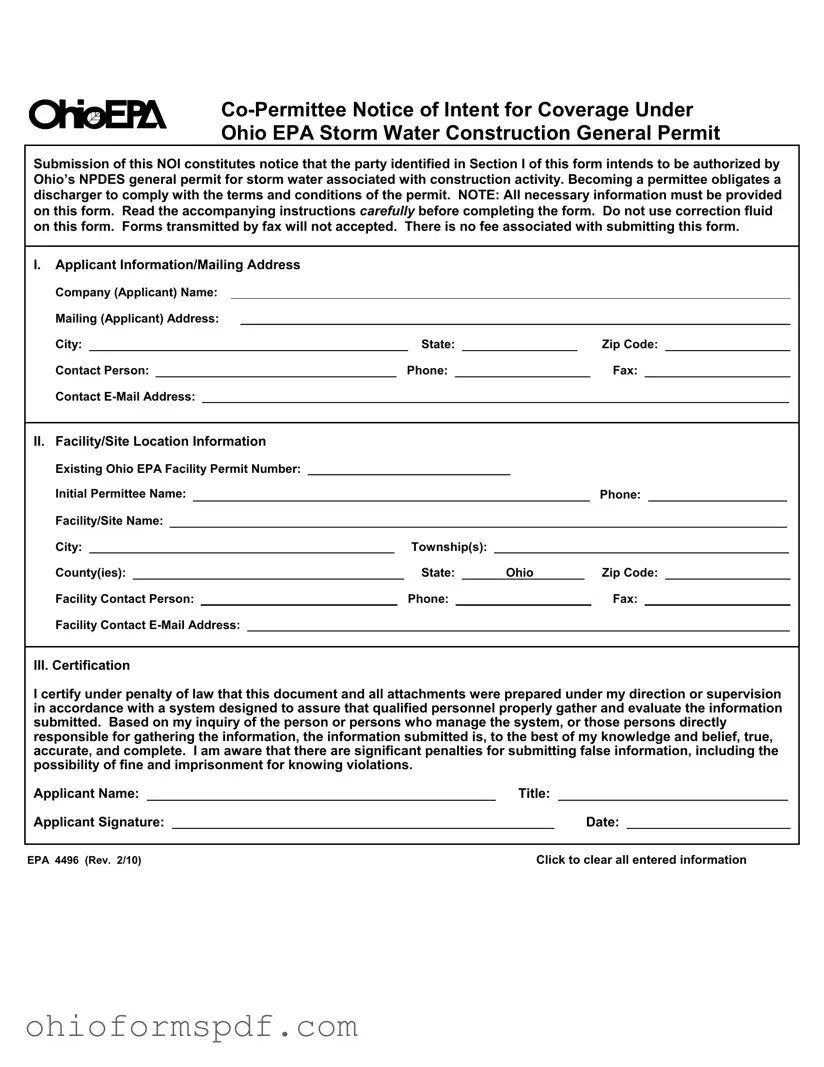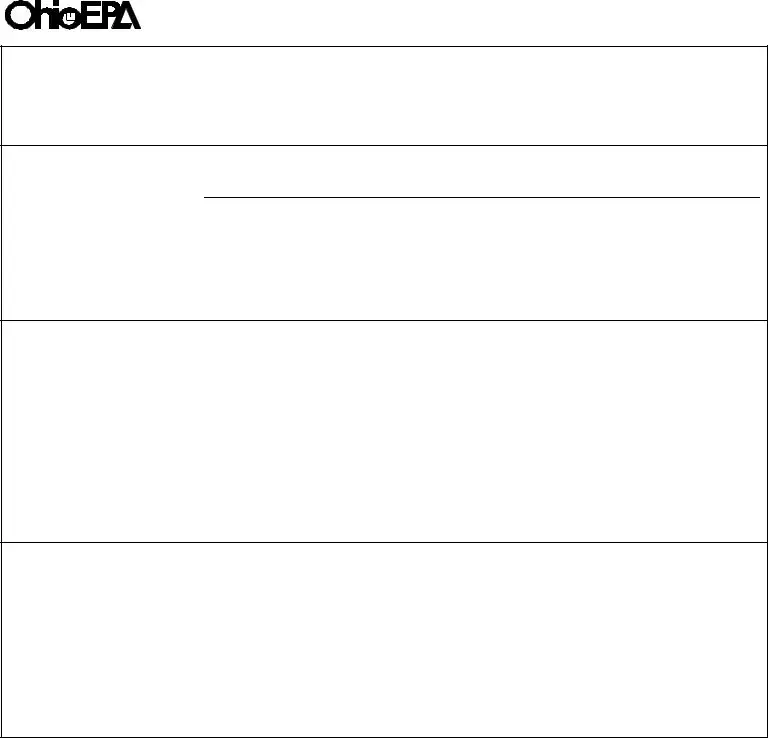The Ohio EPA 4496 form shares similarities with the Notice of Intent (NOI) for the National Pollutant Discharge Elimination System (NPDES) general permits. This NOI is a document that is required when an entity intends to discharge pollutants into waters of the United States, ensuring compliance with the Clean Water Act. Like the Ohio EPA 4496 form, the NPDES NOI requires detailed information about the discharger, including the facility location and contact persons, and involves a commitment to adhere to the conditions of the permit to protect water quality.
Another similar document is the Storm Water Pollution Prevention Plan (SWPPP) document, which outlines measures a construction site operator intends to implement to prevent stormwater contamination. The SWPPP shares the intent of the EPA 4496 form to mitigate the impact of stormwater discharges associated with construction activity. Both documents emphasize the responsible management of stormwater runoff to comply with regulatory guidelines and protect environmental quality, although the SWPPP is more detailed and site-specific.
The Certification of Compliance with Water Quality Requirements is another document that parallels the Ohio EPA 4496 form. This certification typically accompanies permit applications to assert that the proposed discharges will comply with applicable water quality standards. Like the 4496 form, it involves a declaration of adherence to environmental regulations, though it is more focused on water quality impacts rather than stormwater management practices specifically.
The Industrial Storm Water Notice of Intent, similar to the Ohio EPA 4496 form, is used by industrial facilities to obtain authorization under a general permit for discharges of stormwater associated with industrial activity. Both forms serve to notify regulatory bodies of the intent to discharge stormwater and require detailed facility information, contact persons, and a commitment to comply with permit terms.
The Joint Application Form for Permit to Discharge Wastewater - Non-Storm Water, while focused on non-stormwater discharges, has a format and purpose closely related to the Ohio EPA 4499 song. It seeks authorization for discharge activities but requires a comprehensive overview of the discharge’s nature, the treatment systems in place, and the expected impact on the receiving water body, emphasizing regulatory compliance and environmental responsibility.
The Construction Notice of Termination (NOT) is an essential document for concluding a period of permit coverage under general stormwater permits. Although it is effectively the opposite process of the Ohio EPA 4496 form in that it seeks to terminate rather than initiate permit coverage, it necessitates providing detailed site and operator information, similar to the initiation process. It signifies the completion of required stormwater management practices and the restoration of the site to stabilize conditions.
The Section 401 Water Quality Certification application is another related document that requires applicants to demonstrate compliance with state water quality standards before receiving federal permits for activities that may result in discharges into U.S. waters. Much like the Ohio EPA 4496 form, it signifies a commitment to uphold environmental protections and provides detailed project descriptions and contact information.
The Hazardous Waste Report, although it covers a different aspect of environmental protection, shares the intent of ensuring regulatory compliance and environmental health. Similar to the Ohio EPA 4496 form, entities must provide detailed information about their practices, albeit focused on hazardous waste management. Both documents require a certification by the applicant that the information provided is accurate and complete, underlining the significance of truthfulness and accountability.
The Air Permit Application shares a common goal with the Ohio EPA 4496 form by seeking to minimize environmental impacts from operational activities. Though focusing on air emissions rather than discharges to water, both types of applications require detailed information about the facility and its environmental management practices, offering a comprehensive overview to regulatory authorities to ensure compliance with environmental standards.
Finally, the Underground Injection Control (UIC) Permit Application, which regulates the subsurface injection of fluids, bears resemblance to the EPA 4496 form in its purpose to protect water quality. Both applications necessitate detailed operational and contact information, commit the applicant to comply with regulatory conditions, and require certification that the information submitted is true and accurate. Both aim to safeguard environmental health, albeit through different regulatory frameworks and environmental media.

